2021 Tata Tigor EV facelift review, road test
Does this all-electric sedan have what it takes to replicate the Tata Nexon EV’s success?
Published on Oct 17, 2021 09:00:00 AM
41,147 Views
Follow us on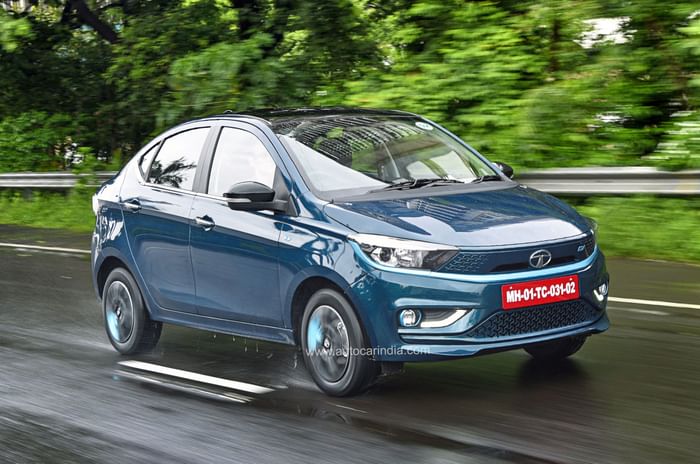
After dominating the electric vehicle (EV) space in India with the Nexon EV, Tata has launched its second all-electric offering, the Tigor EV, to continue its rule. Not to be confused with the all-electric version of this compact sedan (now rebranded as the Xpress-T) that continues to cater to the commercial vehicle (CV) segment, this 2021 Tigor EV is the passenger vehicle (PV) iteration which we’ll focus on.
The Tigor EV features a more sophisticated electrical architecture compared to its CV sibling. It gets a 350V electrical system and a 26kWh liquid-cooled battery pack, which is paired with a permanent magnet synchronous motor. Launched at an introductory price, ranging from Rs 11.99 lakh to Rs 13.14 lakh (ex-showroom), the Tata Tigor EV has pipped the Nexon EV (Rs 13.99 lakh-Rs 16.85 lakh) to become the most affordable electric car to go on sale. So, the question is, will the Tigor EV be as successful as the Nexon EV? We put it through our exhaustive tests to find the answer.

There’s little to talk about when it comes to EV-specific exterior and interior enhancements. On the outside, an enclosed gloss black panel mimics a front grille and features a neatly executed tri-arrow pattern, with the latter also marking its presence on the front air-dam. Other electric-specific changes include a light blue ‘humanity line’ that underlines the grille area and headlamps. These highlights also make their way around its fog lamps, on the wheel covers and on the rear bumper. This Tata proudly flaunts its green credentials with ‘EV’ badges scattered across its exteriors.
| Tata Tigor EV Price, Mileage, Specifications, Features and Variants | |
|---|---|
| Brand | Tata |
| Model Name | Tigor EV |
| Tata Tigor EV Price | ₹ 14.48 - 15.62 lakh |
| Tata Tigor EV Range/Mileage | Electric : 213km |
| Tata Tigor EV Specifications | Sedan | 5 doors | 5 seats View All Specs |
| Tata Tigor EV Features | Halogen headlight | 3.9-inch Screen display | 2 airbags View All Features |
| Tata Tigor EV Variants | XE | XT | XZ+ View All Variants |
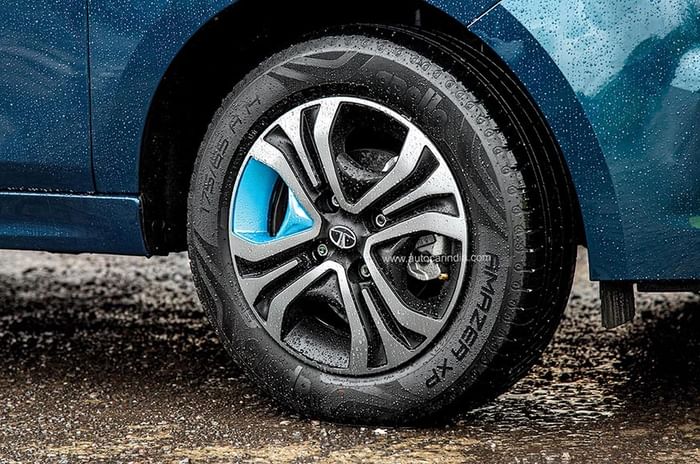
Carrying forward a similar theme inside are light blue accents on the dashboard, as well as a tri-arrow pattern on the fabric seats. The biggest change on the inside is the new rotary gear selector knob, similar to the Nexon EV’s. This selector is slow to respond, and the shift between D and R, in particular, demands your patience. There’s also a new digital speedometer to speak of, which appears a bit busy in terms of visual elements and displays only essentials like battery percent, range and odometer. The bar to its left shows the power consumption, while the one on the top-right displays charge, and the one on the bottom-right shows regeneration intensity. Its new 7.0-inch touchscreen is easy to operate and, in-line with the current trend, it gets connected features via a mobile app that include location-based services, remote control for the air-con and door locks, among 35 others.
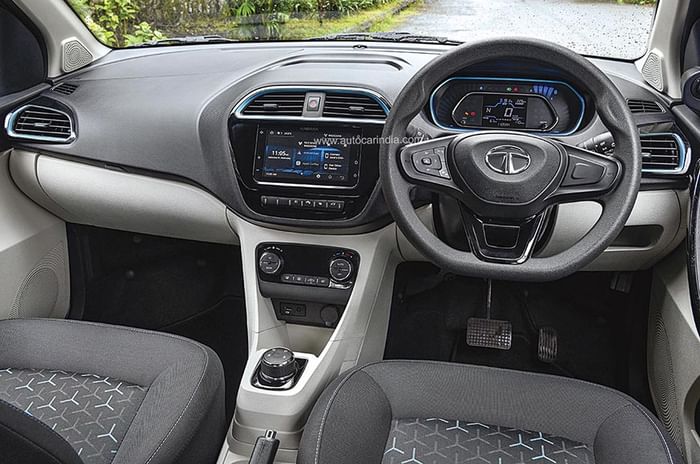
Like in the standard car, the seats are wide and accommodating, although the cushioning is a bit firm and the front passenger is seated rather high in this sedan. There’s adequate legroom in the rear, but headroom for taller occupants is limited due to a sloping roofline, and the seat’s narrow width makes it ideal for two adults.
In this EV, the boot area has been reduced by 103 litres (compared to its petrol version) to 316 litres, as the spare wheel is placed vertically on the floor, which eats away into usable cargo space. The reason for this arrangement is the Tigor EV’s unique split battery setup, wherein one part of the battery rests in the fuel tank location, while the other is placed beneath the boot floor, in the spare wheel well.
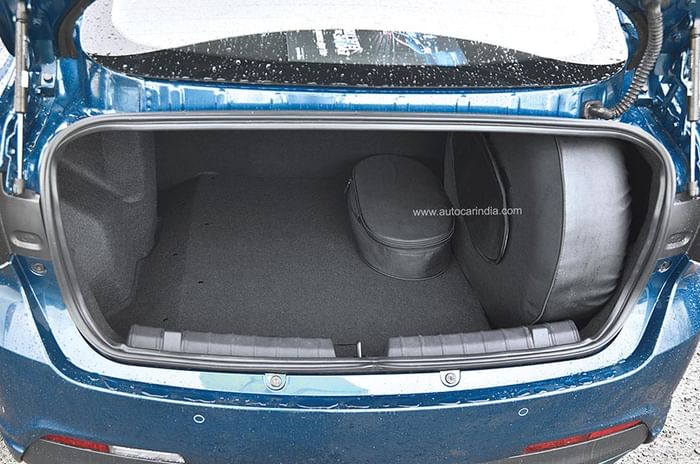
The EV’s structure gets additional reinforcements in some places, comprising of higher strength materials than the petrol version. Even the rear end has been further strengthened to support the battery mounting, enhancing its rear crash safety in the process. As a result of the additional reinforcements and its twin-battery layout and motor, kerb weight has increased by nearly 200kg, tipping scales to 1,235kg.
Like in the case of the Nexon EV, the Tigor EV’s battery and motor conform to IP67 standards, which mean they have passed the ingress protection test of being submerged under one metre of water for 30 minutes. And to further boost buyer confidence, Tata is offering an eight-year or 1,60,000km warranty on the battery pack and motor, in addition to the three-year or 1,25,000km standard warranty. What’s also reassuring is that the battery pack has been certified with an AIS-048 rating – the most stringent safety test in India, which includes nail penetration up to cell level, a crush test, a fire test and more.
Copyright (c) Autocar India. All rights reserved.

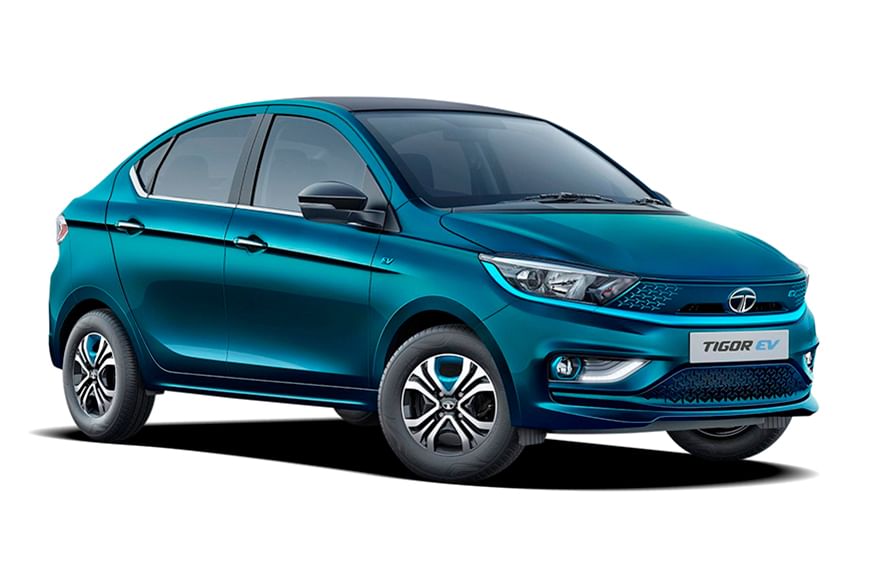



Comments
Member Login
Personal Details
No comments yet. Be the first to comment.